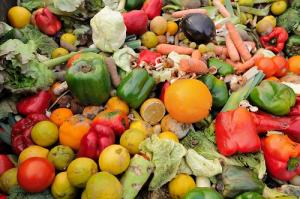With the consequences of COVID-19 still unfolding, one area of major disruption has been to global food systems, resulting in significant increases in food loss and waste.
Today, the first ever International Day of Awareness of Food Loss and Waste, is a wake-up call. We must access and make available the “invisible” food lost and wasted in our supply chains – and we will see that there is enough food for everyone.
In the first half of 2020, tonnes of perishable agricultural produce have been discarded due to reduced demand from the tourism and hospitality sectors, scarce seasonal labour and border closures. In some markets, perfectly edible fresh fruit, milk, eggs, potatoes, and other commodities in net overstock or affected by the disrupted supply chains were discarded or reploughed into the fields.
While in many countries this reduced demand led to price drops in fresh produce, meat, and fish, as compared to the same period last year, in other countries closed borders and logistical problems led to scarce availability of food staples and to never-before-seen price hikes, contributing to food insecurity.
These are only a few unfortunate consequences of disrupted value chains – this time by a pandemic, but next time potentially by drought or other incidents. With a growing number of hungry and undernourished people globally, imperfect and unsustainable food systems are disproportionally affecting the most vulnerable and can no longer be ignored.
While exacerbated by the COVID-19 pandemic, the food loss and waste crises are nothing new. Food loss and waste refers to the food that is never harvested, food that is discarded before it even travels to distribution centres, and food that is removed from supermarket shelves before anyone could buy it. Consumers notice waste when we throw out food. But the food lost because of disrupted supply chains, overproduction, inadequate storage remains largely invisible.
The waste of scarce resources has considerable impact on the environment and society and results in immense economic costs.
According to an FAO estimate, one third of food produced for human consumption, worth 1.2 trillion USD, is lost or wasted every year. Nearly 14% of the world’s food is lost from post-harvest up to (but not including) the retail level. Moreover, the share of greenhouse gas (GHG) emissions caused by food produced but never eaten is currently estimated at 8% and continues to grow. Finally, the current state of global food systems does not guarantee food security and nutrition to meet the demands of the growing population of our planet.
On the occasion of the first-ever International Day of Awareness of Food Loss and Waste on 29 September 2020, let us remember that fighting climate change starts with our fridges. Preventing food loss and waste has to become a daily responsibility for each of us.
What if we could access and consume the “invisible” food? If we look at the estimates provided by our partner agencies, we see that there is enough food produced for everyone, yet hunger still exists, and food is continuously lost or wasted.
Food loss and waste is high on our agenda at UNECE; we have been working on the issue since 2013 and in recent months we have:
- Launched a Code of Good Practice to reduce fresh food losses,
- Developed a measuring methodology and
- Launched the #saveinvisiblefood campaign, calling on all the actors along the food supply chain to redistribute, repurpose and add value to the food which is not traded or consumed – in other words “invisible”. Food loss and waste is also at the heart of a switch to a circular economy.
In all of these efforts, the importance of knowing where food disappears — as loss or waste — cannot be underestimated. Systematically identifying, tracing, and redistributing the “invisible” food is a key element in the fight for food and against loss. FeedUp@UN – a digital blockchain-powered solution designed by UNECE for identifying, quantifying, and tracing the “invisible” food will be one solution. Integrated with market and distribution places, it will make food available to those who need and want it the most, and to those who give it another life — the food otherwise discarded can be used for textile fibers and fashion, dried fruits, juices or processing. By identifying the food loss hotspots throughout the value chain, FeedUP@UN will contribute to more circular food production and responsible food consumption, while accelerating SDG action.
We need sustainable and resilient food systems to advance our economies, to contribute to improved livelihoods, and reduce our environmental footprint. Draining and wasting the resources of our planet with food that is never eaten is no longer acceptable and must stop. We have neither a plan B nor a Planet B.
I encourage all relevant stakeholders to join forces to help bridge the gaps between food loss, hunger, and resource use to accelerate cross-cutting progress towards our Sustainable Development Goals – a win-win for all and a chance to re-imagine our entire food system. I call on governments and the private sector to get involved, raise awareness on the food loss and waste problem we are facing every day, and take advantage of innovative solutions such as FeedUp@UN.
You can find more information on our website.
This article was originally published by IISD at: sdg.iisd.org/commentary/guest-articles/food-lost-and-wasted-the-invisible-face-of-our-food-chain-and-an-opportunity-for-change/
